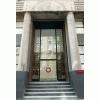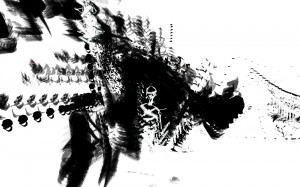 |
Pearl Lam Galleries
Pearl Lam Fine Art
No. 181 Middle Jiangxi Road, G/F
Shanghai, China 200002 map *
tel: +86 21 6323 1989
fax: +86 21 6323 1988
send email
website
|

Enlarge
|
| "Wu Ming", form is formless: Chinese Contemporary Abstract Art
|
|
| by Pearl Lam Galleries
Location: Contrasts Gallery
Artist(s): ZHU Jin Shi, LEI Hong, FENG Mengbo, QIN Feng, QIN Yufen, TAN Ping, WANG Dongling, ZHANG Jianjun, ZHENG Zhongbin
Date: 26 Mar - 30 May 2011
Contrasts Gallery is proud to present “Wu Ming”, form is formless: Chinese Abstract Art, which showcases the work of nine prominent Chinese Contemporary artists who exemplify the many approaches to and beliefs underpinning this relatively undiscovered genre of ‘Chinese Abstract Art’. Contrasts Gallery's mission is to emphasize the unique philosophy and characteristics of this genre in order to rectify the West’s misconception that Chinese Abstract Art is derived from Western Abstract Expressionism.
The term 'abstract' is a word used to imply a sense of freedom. Although Chinese Abstract may appear to be related to Western Abstract, owing to free forms and 'formlessness', it actually stems from a completely different thought process. Chinese Abstract Art has not evolved from Clement Greenberg’s theory, but rather it is an extension of Chinese culture based on Laozi (Taoism), Buddhism and Confucianism, which is fundamentally reflected in Chinese traditional ink brush and calligraphy culture. Chinese abstract artists adopt the philosophy behind ink brush painting, using the Taoist theory, qi and wuwei to create works that both embrace China’s 5,000 years of tradition with their reaction to present day urbanization through various mediums of oil painting, ink, video and installation.
Contrasts Gallery has championed Chinese Contemporary Abstract art since exhibiting Mind Space, Maximalism in Contrasts, curated by Prof. Gao Minglu in May 2010. Contemporary Chinese Abstract Art can be seen as an extension of Chinese culture, where self-cultivation is key. Following the notion of Tian Di Ren the unity of heaven, earth and man, works are created as a form of spiritual enlightenment and a means to process thoughts, ultimately achieving a sense of balance and humanity. Works by Feng Mengbo, Lei Hong, Qin Feng, Qin Yufeng, Tan Ping, Wang Dongling, Zhang Jianjun, Zheng Chongbin and Zhu Jinshi all embody this philosophy, embracing rhythm and qi, and look to connect to a higher power and universe.
About the Artists
Wang Dongling has a unique importance in the history of Chinese calligraphy, maintaining his integrity with tradition while struggling for its modern identity. Using wuwei (action without conscious effort), Wang’s abstractions involve dramatic gestural forms inhabiting a plane.
Zheng Chongbin is representative of a newer generation of artists and has been singularly focused on the medium of ink and its possibilities. Zheng’s abstract works result from an investigation of space, in which vocabulary is often conditioned by scale and its tangibility. Artists Zhang Jianjun, Qin Feng and Lei Hong, recognizing the advantages of ink brush language for abstraction, all turned to ink painting from other media.
Zhang Jianjun works with ink on paper and creates installations involving ink. His work is based on the process of time: while he has developed new techniques to incorporate the temporal element into his works, there is an unaltered logic on the structure following the philosophy of calligraphy, so that the viewer can mentally follow the process of an ink work’s creation.
While devoting his creative energy to extracurricular experimentation with radical Western approaches to art, Qin Feng’s mature career as an artist is marked by the combining of Chinese calligraphic forms with oil painting, installation, and mixed media.
Lei Hong makes pencil drawings composed of dots, lines and squares that have certain characteristics of Western abstract paintings but not the rational structure of the elements. Instead, Lei Hong’s drawings reveal a spirit of humanism. The dots and lines are not conceptual, but marks that relate to traditional Chinese ink painting.
Tan Ping’s triptychs feature line and dot figures within a flat composition Trained in printmaking, his works are reminiscent of that media. Stressing the action of painting rather than thoughts, his works exemplify an unfinished appearance, an enigmatic imagery that allows the viewer space for an alternate personal exploration.
Qin Yufen creates abstract ink paintings and calligraphic works, many of which represent an abstract quality. Her installations are imbued with a sense a fragile impermanence, composed from such materials as fabric, bamboo and paper. In her set of ten hanging scrolls titled Rainbow Colored Clothes Worn by the Immortals, traditional Chinese painting relies on a vocabulary of brushstrokes.
Zhu Jinshi has devoted himself to abstract painting for three decades. Living in Germany, the influence of Expressionism led to his applying paint more thickly and expressively. Paintings shown in this exhibition refer to a specific time, place or mood where the explicit imagery dissolves into a pure material, color and gesture. An emphasis on process is followed through his heavy application, as well as the conditioning of his mind.
Feng Mengbo, China’s first and most important computer artist, is well known for pioneering playful and interactive works. He has often used computer games to create artworks. Not Too Late is the most recent of these and reflects the artist’s growing interest in traditional culture, including landscape painting and calligraphy. |
|
|
|
|
